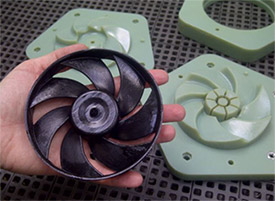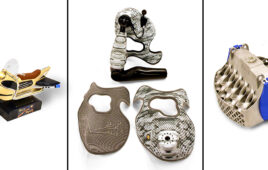Some of the most popular articles featured on MakePartsFast involve 3D printing and injection molding; should you use one versus another, when and how do you move from one process to the other; and best design practices and tips when working with both 3D printing and injection.
Here’s a quick roundup of these features.
3D printing versus injection molding
Of course, every manufacturing process has its share of best-fit applications. The engineers at Proto Labs have about 16 years experience in when to use injection molding and when to choose 3D printing. Selection involves what the final part needs to be. For example, does the finish matter? What size will the final part be? Plus, there are temperature considerations, and so on.
Will 3D Printing be the demise of Plastic Injection Molding?
Some observers claim that 3D printing is going to be the demise of injection molding. While there are certainly cases where 3D printing makes sense, the reports of the death of injection molding have been greatly exaggerated. Both processes play a role in prototyping and production.
However, there is an emerging “hybrid” practice of 3D printing the mold tooling inserts only, then producing the parts with injection molding. This article goes into more detail.
How to move from 3D printing to injection molding
How and when do you shift from 3D printing to molding? Some considerations include the complexity of the design, the material, the production volume and the part’s intended use. You can find more tips here.
How to use 3D printing for injection molds
Here’s a short video on tips for using 3D printing to create injection molds.
3D printing injection molds slashes prototype lead time by 40%
And here’s an application example of the Italian division of international consumer goods giant, Unilever, using 3D printed injection molds to reduce prototype lead times. One of the benefits here was the ability to work in the final specified material.
These articles will give you plenty of useful information when it comes to deciding 3D printing or injection molding.
Leslie Langnau
[email protected]
![]()
Filed Under: 3D printing • additive • stereolithography, Molding • injection molding components, Rapid prototyping, Make Parts Fast





